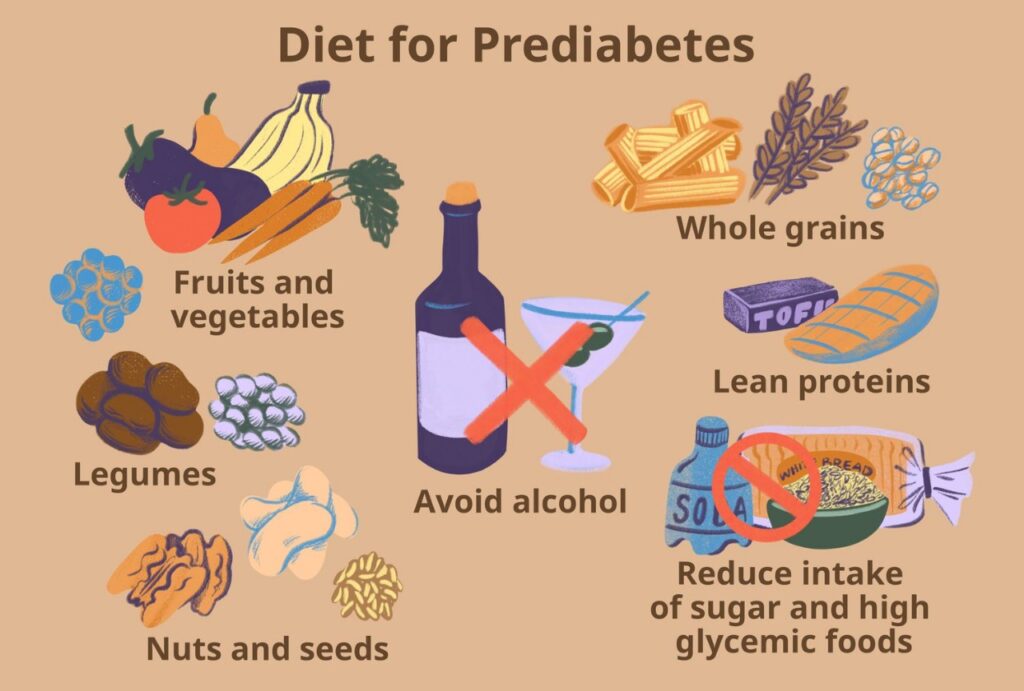10 Natural Food Choices
That Help Balance Blood Sugar – Backed by Real Change
“I used to feel sleepy after every meal, my hands would shake when I was hungry, and I craved sugar constantly. It felt normal—until it wasn’t.”
These are the kinds of stories we hear every day. And for many people, it all points to one thing: rising blood sugar levels. Left unchecked, it turns into type 2 diabetes. The question most people ask is:
What can I eat to stop diabetes?
You don’t need extreme diets or pills to take control. In fact, simple daily food choices—plus a little natural support—can help balance blood sugar and bring your energy, focus, and freedom back.
Let’s dive into the exact foods that help, what to avoid, and how thousands are supporting their bodies naturally.
Why Your Diet Is a Big Deal
When you eat high-sugar or processed foods often, your blood sugar spikes fast. To manage that, your pancreas releases insulin. Over time, your cells stop responding to insulin. That’s how insulin resistance—and eventually type 2 diabetes—begins.
The good news? You can slow or even reverse this with the right food.
And when you pair those foods with natural daily support, your body can respond even better.
Some people add gentle herbal drops to their morning drink to help keep blood sugar steady throughout the day.
Tap here to see what they’re using »
10 Best Foods to Help Stop Diabetes Naturally
1. Leafy Greens
Spinach, kale, and chard are low in carbs but high in fiber and magnesium. They reduce sugar spikes and help insulin work better.
Add to smoothies, soups, or stir-fries.
2. Steel-Cut Oats
Unlike instant oats, steel-cut oats digest slowly and keep you full longer. They help avoid post-breakfast crashes.
Sprinkle in some cinnamon—a natural blood sugar regulator.
3. Eggs
Eggs are low-carb, high-protein, and help control hunger. Eating eggs regularly has been linked to better fasting glucose.
Pair with avocado for a healthy, sugar-balanced breakfast.
4. Chia Seeds
Full of fiber and omega-3s, chia seeds slow digestion and reduce sugar absorption. They’re also great for gut health.
Add to yogurt, oatmeal, or make chia pudding.
Some daily herbal blends include chia-supportive ingredients like guarana and maca root to support energy and digestion.
Click here to explore them »
5. Fatty Fish
Salmon, tuna, and sardines are packed with omega-3 fatty acids. These reduce inflammation and improve insulin sensitivity.
Aim for 2–3 servings per week.
6. Berries
Blueberries, raspberries, and strawberries are low in sugar but rich in antioxidants and fiber.
Eat as a snack or add to breakfast bowls instead of sugary granola.
7. Sweet Potatoes
Unlike regular potatoes, sweet potatoes digest slowly and have more nutrients. They help you feel full without causing spikes.
Bake or roast with olive oil and herbs.
8. Beans and Lentils
Rich in plant protein and fiber, these help slow down sugar absorption and lower your A1C levels over time.
A budget-friendly blood sugar hero!
9. Avocados
Full of healthy fats, avocados slow sugar absorption and help keep you satisfied. Plus, they support heart health.
10. Greek Yogurt (Plain)
High in protein and probiotics, Greek yogurt helps with gut health and sugar balance. Just skip the flavored ones—they’re often loaded with sugar.
Probiotic foods + herbal support = better digestion, better glucose control.
Click here for natural glucose support »
🚫 What to Avoid (If You Want to Stop Diabetes)
Just as important as what to eat—here’s what to avoid:
These foods force your body to release insulin constantly—leading to burnout, insulin resistance, and eventually diabetes.
What Should You Drink?
Staying hydrated helps flush out excess glucose and keeps your blood clean.
Drink more:
- Water
- Herbal teas (like cinnamon or green tea)
- Water with lemon or cucumber
❌ Avoid:
- Sugary drinks
- Store-bought fruit juice
- Artificially sweetened “diet” sodas
Some people boost their morning tea or water with a few drops of herbal support that include ingredients like green tea and cinnamon.
Click here to learn more »
Natural Daily Support for Sugar Control
Even with a perfect diet, your liver and pancreas may still struggle—especially if you’ve had sugar imbalance for years.
That’s why many people are adding gentle herbal drops into their daily routine. These blends are usually:
- Liquid (easy to take with water or juice)
- Made with herbs like Gymnema, green tea, ginseng, and chromium
- Non-GMO, stimulant-free, and safe for daily use
- Designed to support blood sugar, energy, and cravings
You don’t need to rely on pills, chemicals, or side-effect-heavy solutions.
Want a supplement that supports your food changes naturally?
Click here to explore the formula that helps »
Real Stories, Real Results
“I used to crash by 3PM every day. Now, I feel steady all day—no sugar rollercoaster!”
— Rehana M., 49
“I didn’t change much—just cleaned up my meals and added a little daily support. My blood sugar finally makes sense.”
— David P., 52
Small Changes = Big Results
So, if you’re still asking yourself, “What can I eat to stop diabetes?” — here’s your answer:
- Whole, fiber-rich, low-glycemic foods
- No sugar traps, no processed junk
- Smart hydration
- Gentle daily support from natural ingredients
You don’t need to be perfect. You just need to be consistent. Every better meal is a win. Every drop of herbal support is a step forward.
Want help getting started?
Click here to begin your natural sugar-balance journey »
Eat This, Not That
FAQ
1. Can food really help stop diabetes?
Yes. What you eat directly affects your blood sugar levels. Eating more whole, fiber-rich, low-sugar foods can help lower your risk of type 2 diabetes or manage it better if you already have it.
2. Do I need to completely stop eating carbs?
No. You don’t need to cut out all carbs—just avoid processed ones like white bread, sugary snacks, and soda. Focus on slow carbs like oats, sweet potato, and lentils.
3. Which fruits are safe to eat?
Berries (like strawberries, blueberries, and raspberries) are low in sugar and high in fiber. Apples and pears are good in moderation. Avoid fruit juices or canned fruits with syrup.
4. How many meals should I eat per day?
3 balanced meals with 1–2 healthy snacks is fine. The key is to avoid skipping meals and keep your blood sugar steady throughout the day.
5. Are eggs and dairy okay if I have high blood sugar?
Yes. Eggs are a great source of protein with no carbs. Choose plain Greek yogurt or unsweetened dairy for best results.
6. What drinks should I avoid?
Avoid sugary drinks like soda, energy drinks, sweet tea, and even most fruit juices. Water, herbal tea, and green tea are much better choices.
7. Can cinnamon or other herbs really help?
Yes. Studies show that herbs like cinnamon, gymnema, and green tea can support better blood sugar control—especially when used daily with a healthy diet.
8. Should I stop eating sweet foods completely?
You can still enjoy sweet foods—but choose natural, low-sugar options like fruit or homemade snacks. Avoid processed sweets, cakes, and cookies.
9. Is there a simple way to support my blood sugar daily?
Yes. Many people add a small amount of herbal support in liquid form (such as drops mixed into water or tea) to help maintain steady energy and reduce sugar cravings.
Click here to see a natural option that helps »
10. How long does it take to see results from food changes?
Most people start to feel better in 1–3 weeks if they eat the right foods and stay consistent. Blood sugar numbers may improve in a few weeks to a few months.





